- Join our September Masterclass to Learn How to Propagate Raspberries or Blackberries
- Benefits of Raspberry and Blackberry Propagation
- 1. Cost-Effectiveness
- 2. Expansion of Existing Garden Beds
- 3. Maintaining Plant Characteristics
- 4. Teaching Opportunity
- 5. Success Rate
- 6. Genetic Diversity
- Choosing the Right Time and Method for Propagation
- Division
- Tip Layering
- Preparing the Soil and Planting Materials
- 1. Choose a Suitable Location
- 2. Clear the Area
- 3. Prepare the Soil
- 4. Test the Soil pH
- 5. Gather Planting Materials
- 6. Provide Support
- Step-by-Step Guide to Propagating Raspberries and Blackberries
- Introduction
- Materials Needed
- Step 1: Select a Healthy Plant
- Step 2: Prepare the Plant
- Step 3: Apply Rooting Hormone (Optional)
- Step 4: Plant the Cane
- Step 5: Provide Proper Care
- Step 6: Transplant the New Plants
- Step 7: Continue Care and Harvest
- Conclusion
- Common Mistakes to Avoid in Propagation
- Caring for Newly Propagated Raspberry and Blackberry Plants
- 1. Watering
- 2. Mulching
- 3. Pruning
- 4. Fertilizing
- 5. Support
- 6. Pest and Disease Control
- 7. Harvesting
- 8. Winter Protection
- Successful Techniques for Propagating Raspberries and Blackberries
- 1. Propagating Raspberries
- 1.1 Division
- 1.2 Tip Layering
- 1.3 Stem Cuttings
- 2. Propagating Blackberries
- 2.1 Division
- 2.2 Tip Layering
- 2.3 Stem Cuttings
- Question-answer:
- What is the best time to propagate raspberries or blackberries?
- How do you propagate raspberries or blackberries?
- What type of soil is best for propagating raspberries or blackberries?
- Can I propagate raspberries or blackberries from seeds?
- How long does it take for propagated raspberries or blackberries to bear fruit?
- Can I propagate raspberries or blackberries in containers?
- What are some common problems when propagating raspberries or blackberries?
- Video: How to Grow Blackberries and Raspberries
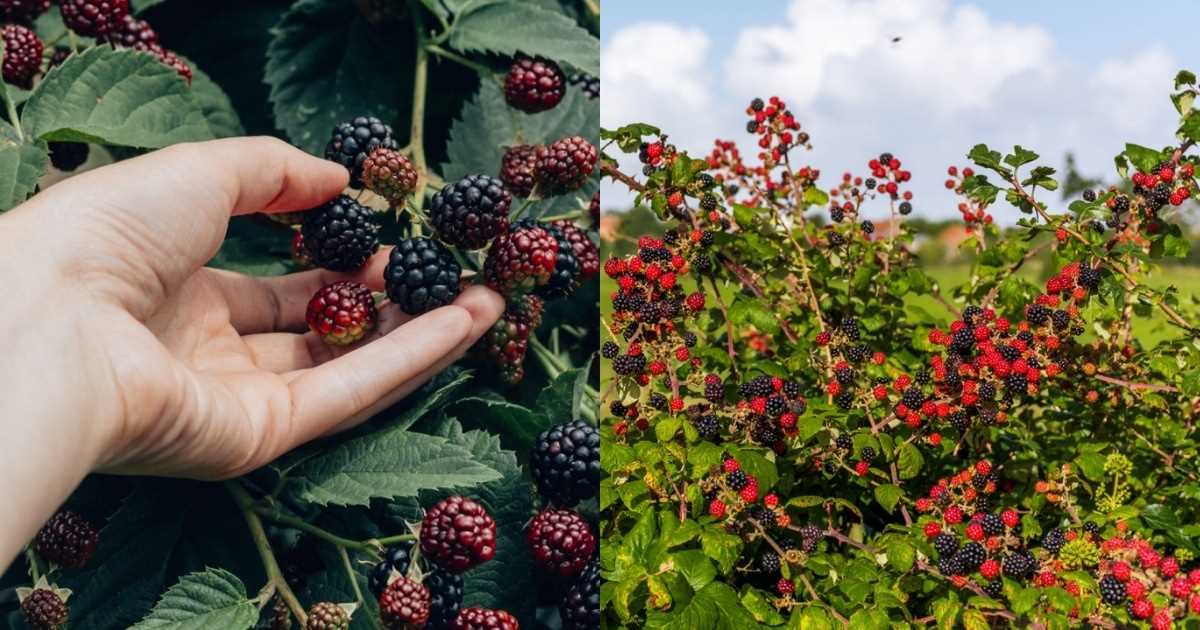
Welcome to the September Masterclass where we will teach you how to propagate raspberries or blackberries! Whether you are a seasoned gardener or a beginner, this masterclass will provide you with all the knowledge and techniques you need to successfully propagate these delicious berries.
Raspberries and blackberries are not only tasty fruits but also beautiful additions to any garden. By learning how to propagate them, you can expand your berry patch or share the joy of growing these fruits with friends and family. During this masterclass, we will guide you through the step-by-step process of propagating raspberries or blackberries, from selecting the right variety to caring for the young plants.
Propagation can be done through various methods, including division, layering, and stem cuttings. We will discuss each method in detail, highlighting the pros and cons, and providing you with expert tips to ensure success. Whether you prefer to propagate raspberries or blackberries through division, where the plant is separated into smaller sections, or by taking stem cuttings, where a piece of the plant is rooted to create a new plant, we have got you covered.
Join us for this informative and hands-on Masterclass, and discover the joy and satisfaction of propagating raspberries or blackberries. By the end of the session, you will have the knowledge and confidence to embark on your own propagation project, and soon be enjoying the fruits of your labor!
Join our September Masterclass to Learn How to Propagate Raspberries or Blackberries
Are you interested in learning how to propagate raspberries or blackberries? Join our September Masterclass and discover the secrets to easily propagate these delicious fruits in your own backyard.
Our expert horticulturists will guide you through the step-by-step process of propagating raspberries or blackberries. Whether you’re a beginner or an experienced gardener, this masterclass is suitable for all skill levels.
During the masterclass, you will learn:
- The different methods of propagating raspberries or blackberries
- How to select the best plants for propagation
- Tips and tricks for successful propagation
- Care and maintenance of propagated plants
By the end of the masterclass, you will have the knowledge and confidence to propagate raspberries or blackberries on your own. Imagine having an abundance of these delicious fruits right in your backyard!
This masterclass is perfect for anyone who loves gardening and wants to expand their fruit-growing skills. Don’t miss out on this opportunity to learn from the experts.
To register for the September Masterclass and secure your spot, simply fill out the form on our website. Hurry, as spots are limited and filling up fast!
Join us and start your journey to becoming a successful raspberry or blackberry propagator today!
Benefits of Raspberry and Blackberry Propagation
Propagating raspberries and blackberries has several benefits, making it a popular practice among gardeners. Here are some of the key benefits:
1. Cost-Effectiveness
One of the main advantages of propagating raspberries and blackberries is the cost-effectiveness it offers. By propagating these plants, gardeners can easily multiply their existing stock without having to purchase new plants from a nursery. This can lead to significant savings, especially for those who want to grow a large number of raspberry and blackberry plants.
2. Expansion of Existing Garden Beds
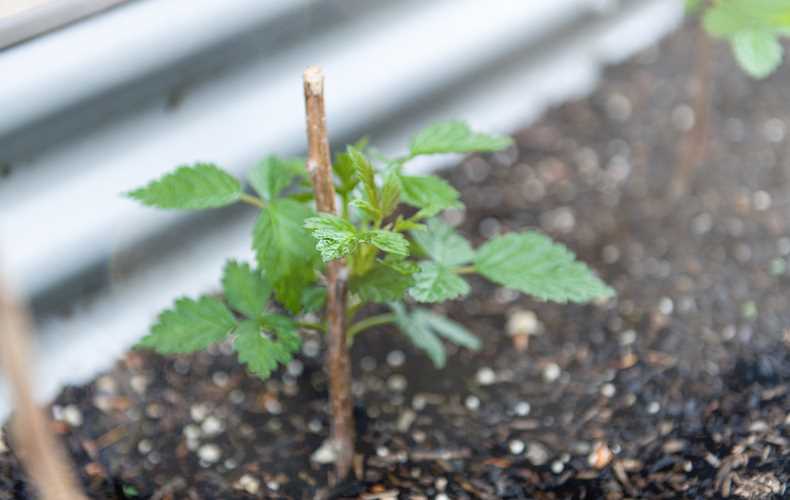

Another benefit of propagation is that it allows gardeners to expand their existing garden beds. By propagating raspberries and blackberries, gardeners can quickly fill up empty spaces in their garden, creating a lush and vibrant landscape. This is particularly useful for those who have limited space and want to maximize their garden’s potential.
3. Maintaining Plant Characteristics
Propagating raspberries and blackberries through cuttings or division ensures that the new plants will maintain the desired characteristics of the parent plants. This is important for preserving the specific qualities, such as fruit size, flavor, or disease resistance, that made the parent plants desirable in the first place. By propagating from known varieties, gardeners can ensure a consistent harvest of high-quality raspberries and blackberries.
4. Teaching Opportunity
Propagation also presents a valuable teaching opportunity. By involving children or novice gardeners in the process, they can learn about plant reproduction and the importance of sustainable gardening practices. It can be a hands-on way to educate others about the joy and benefits of growing raspberries and blackberries.
5. Success Rate
When done correctly, raspberry and blackberry propagation can have a high success rate. With proper care and attention, the cuttings or divisions can develop strong root systems and establish themselves as healthy plants. This allows gardeners to have a reliable and consistent supply of raspberries and blackberries for years to come.
6. Genetic Diversity
Through propagation, gardeners can also contribute to the preservation and expansion of genetic diversity within raspberry and blackberry varieties. By propagating from different plants, the resulting population will have a wider range of genetic traits, making it more adaptable to different environmental conditions and less susceptible to diseases or pests.
Overall, the benefits of raspberry and blackberry propagation make it a worthwhile practice for gardeners who want to save money, expand their garden beds, maintain plant characteristics, teach others, and contribute to genetic diversity. It is a rewarding and sustainable way to enjoy the delicious fruits of these plants.
Choosing the Right Time and Method for Propagation
When it comes to propagating raspberries or blackberries, timing is crucial. The best time to propagate these plants is during the dormant period, which is typically in the late winter or early spring. This is when the plants are not actively growing and can handle the stress of propagation.
There are two main methods of propagating raspberries and blackberries: division and tip layering.
Division
Division is the simplest method of propagation and involves separating the roots of an existing plant to create new plants. Here’s how you can propagate raspberries or blackberries through division:
- Select a healthy and mature plant with vigorous growth.
- Dig around the base of the plant to expose the roots.
- Use a sharp knife or garden tool to carefully separate the roots into smaller sections. Make sure each section has healthy roots and shoots.
- Transplant the divided sections into prepared soil or containers, ensuring they are at the same depth as they were in the original plant.
- Water the newly divided plants thoroughly and keep them well-watered until they establish.
Tip Layering
Tip layering is another effective method of propagating raspberries and blackberries. This method involves bending the tip of a long, flexible cane to the ground and securing it in place until it develops roots. Follow these steps to propagate raspberries or blackberries through tip layering:
- Select a long, flexible cane from a healthy and mature plant.
- Bend the tip of the cane to the ground and make a small nick or notch on the underside of the bent section.
- Bury the notched section of the cane in the soil, making sure it is secure and in contact with the soil.
- Water the layered cane thoroughly and keep the soil moist until roots develop.
- Once the layered cane has developed roots, you can carefully cut it from the parent plant and transplant it to its new location.
Whether you choose to propagate raspberries or blackberries through division or tip layering, it’s important to select healthy and mature plants for the best results. With the right timing and method, you can easily propagate these delicious berries and expand your berry patch.
Preparing the Soil and Planting Materials
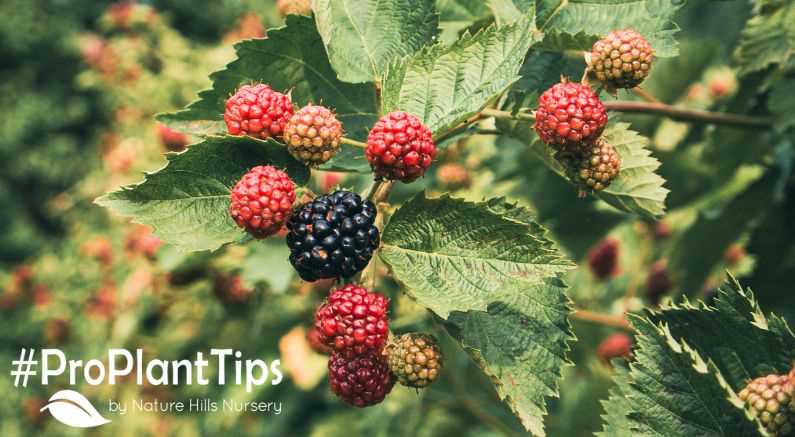

Before propagating raspberries or blackberries, it is important to prepare the soil and gather the necessary planting materials. Here are the steps to follow:
1. Choose a Suitable Location
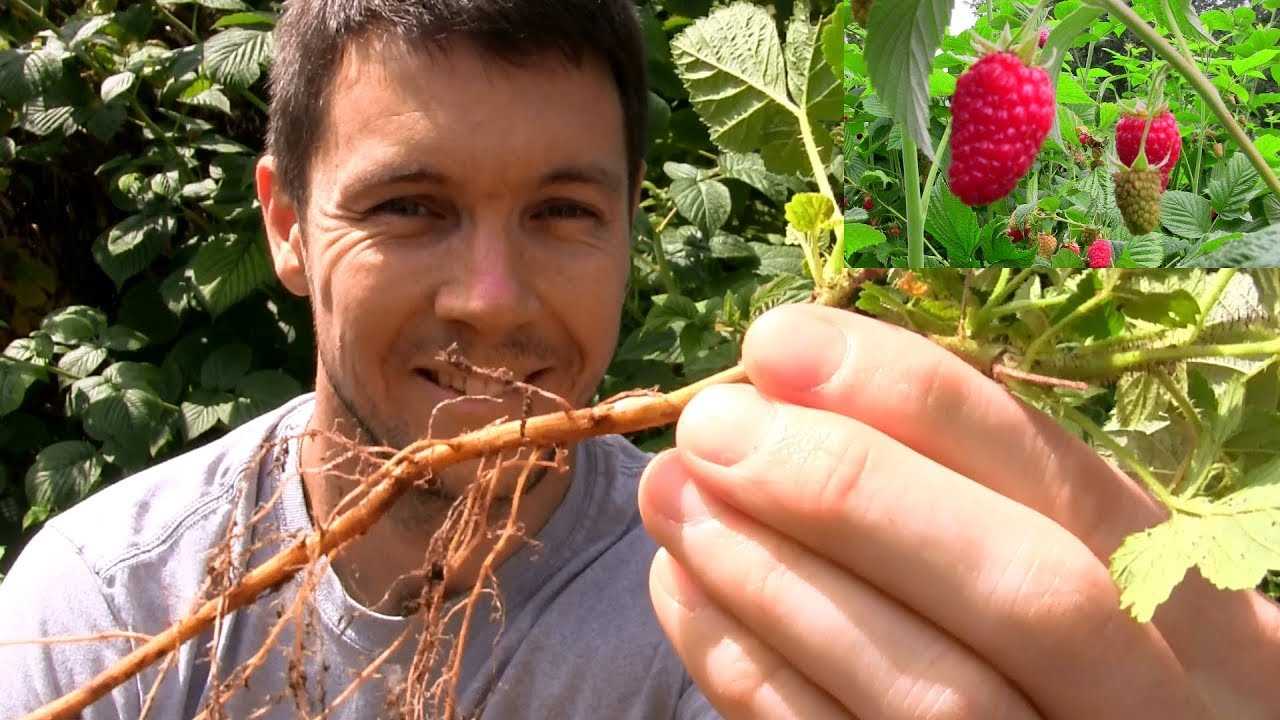

Find an area in your garden that receives full sun for at least six hours a day. Raspberries and blackberries thrive in well-draining soil, so choose a spot with good drainage.
2. Clear the Area
Remove any existing plants or weeds from the area where you plan to plant your raspberries or blackberries. Clear the space and make sure there are no obstructions that might hinder the growth of the new plants.
3. Prepare the Soil
Loosen the soil using a garden fork or tiller. Break up any clumps and remove rocks, roots, or debris that may impede the growth of the plants. Consider adding organic matter, such as compost or well-rotted manure, to improve the soil’s fertility and structure.
4. Test the Soil pH
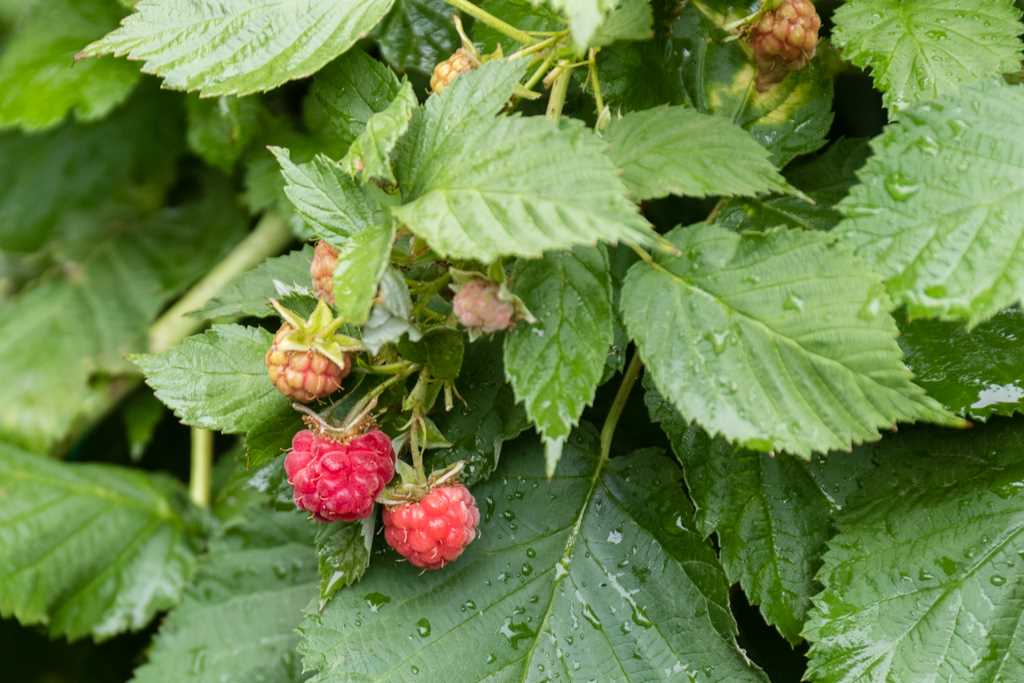

It is recommended to test the soil pH before planting raspberries or blackberries. These plants prefer slightly acidic soil with a pH between 5.5 and 6.5. Adjust the soil pH if necessary by adding lime to raise it or sulfur to lower it.
5. Gather Planting Materials
When propagating raspberries, you can use two types of cuttings: hardwood cuttings or tip cuttings. Hardwood cuttings are taken from the previous year’s growth, while tip cuttings are taken from the current season’s growth. Additionally, you will need pruning shears or a sharp knife to take the cuttings.
For blackberries, you will need to dig up suckers or root cuttings from an established plant. Make sure to choose healthy suckers with roots attached or obtain fresh root cuttings from a reliable source.
6. Provide Support
Raspberries and blackberries require support to grow upright. Install a trellis system, fence, or stakes to provide support for the plants as they grow. This will help prevent the canes from bending or breaking under the weight of the fruit.
By following these steps, you will have a well-prepared soil and the necessary planting materials for propagating raspberries or blackberries. This will set you on the right path to successfully grow your own delicious berries.
Step-by-Step Guide to Propagating Raspberries and Blackberries
Introduction
Propagating raspberries and blackberries is a simple and rewarding way to expand your fruit garden. With just a few steps, you can create new plants from existing ones, ensuring a healthy and abundant harvest for years to come. This step-by-step guide will teach you how to propagate raspberries and blackberries successfully.
Materials Needed
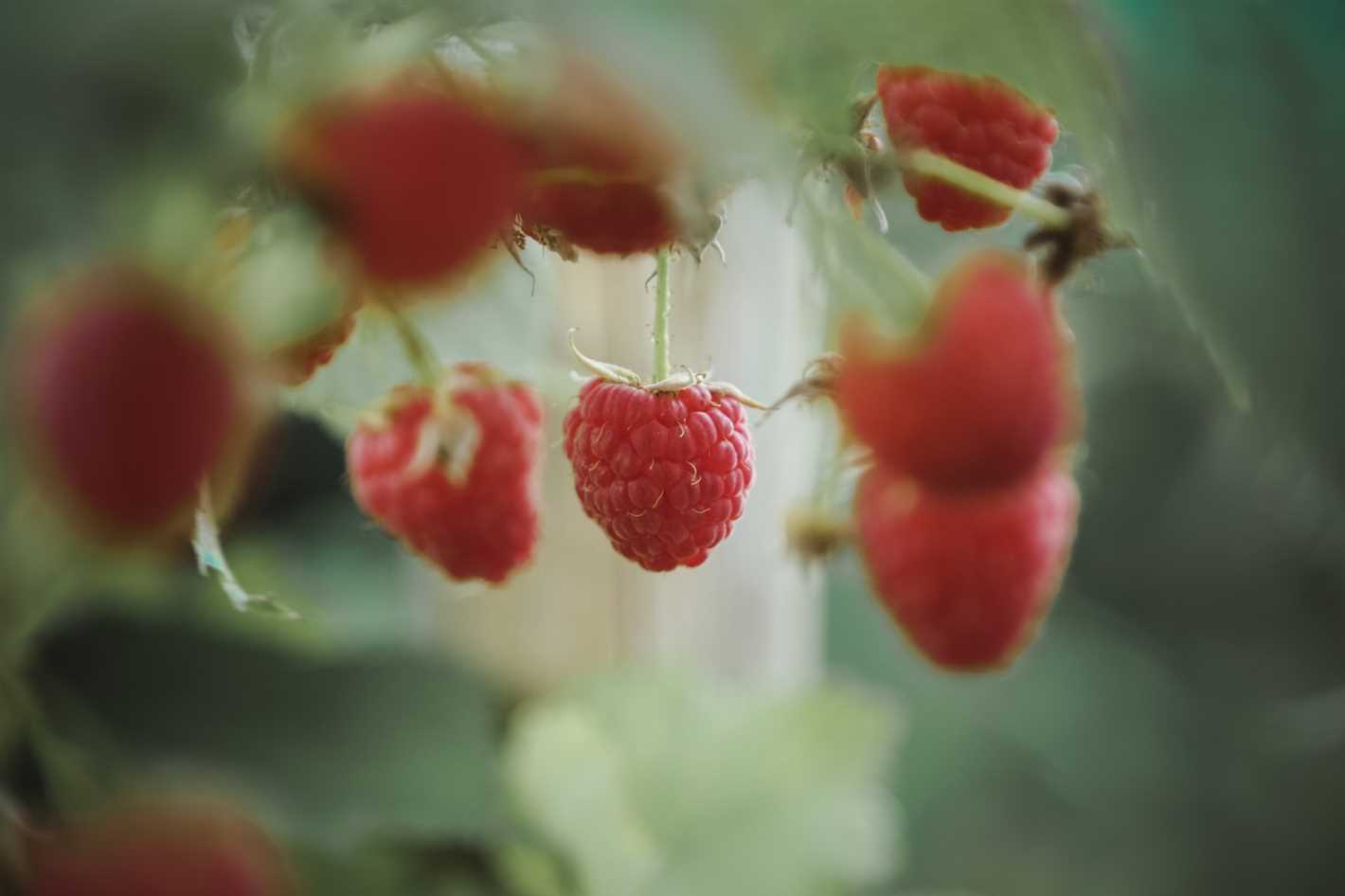

- Healthy raspberry or blackberry plant
- Sharp pruners or garden shears
- Rooting hormone (optional)
- Potting soil
- Planting containers
- Watering can or hose
Step 1: Select a Healthy Plant


Choose a healthy raspberry or blackberry plant from which to propagate new plants. Look for a plant with vigorous growth and disease-free foliage. This will ensure that the new plants have a higher chance of thriving.
Step 2: Prepare the Plant
Using sharp pruners or garden shears, cut a healthy cane from the raspberry or blackberry plant. Make sure the cane is at least 6-8 inches long and has several leaf nodes. Remove any excess leaves from the bottom half of the cane.
Step 3: Apply Rooting Hormone (Optional)
If desired, dip the cut end of the cane in rooting hormone. This will help stimulate root growth and increase the chances of successful propagation. However, it is not necessary for all varieties, so you can skip this step if you prefer.
Step 4: Plant the Cane
Fill a planting container with moist potting soil. Make a hole in the soil and gently insert the bottom half of the cane into the hole. Firmly press the soil around the base of the cane to hold it in place. Repeat this process for each cane you wish to propagate.
Step 5: Provide Proper Care
Place the planting containers in a sunny location with well-draining soil. Water the cuttings regularly to keep the soil moist but not waterlogged. Over time, the canes will develop roots and new growth. Monitor the plants for any signs of distress or disease and take appropriate action if necessary.
Step 6: Transplant the New Plants
After a few months, when the new plants have grown a few inches in height and have developed a strong root system, they are ready to be transplanted to their permanent location in the garden. Choose a sunny and well-drained spot for the plants, ensuring they have enough space to grow and spread comfortably.
Step 7: Continue Care and Harvest
Once the new plants are transplanted, continue to provide regular care, including watering, mulching, and pruning as needed. As the plants grow, they will produce berries that can be harvested and enjoyed. Remember to prune the plants annually to maintain their health and productivity.
Conclusion
Propagating raspberries and blackberries is a straightforward process that allows you to expand your fruit garden without spending a lot of money. By following this step-by-step guide, you can successfully propagate these delicious fruits and enjoy a bountiful harvest for years to come.
Common Mistakes to Avoid in Propagation
- Not selecting healthy plants: It is important to choose healthy and disease-free plants for propagation. Plants that are already weak or infected may not successfully propagate and could pass on their problems to the new plants.
- Using the wrong propagation method: Different plants require different propagation methods, such as stem cuttings, layering, or division. Using the wrong method can result in failure to propagate or weak and unhealthy plants.
- Skipping the preparation process: Before propagating, it is important to prepare the plant and the rooting medium. This may involve treating the cuttings with rooting hormones, providing the appropriate soil conditions, and maintaining the right temperature and moisture levels.
- Overwatering or underwatering: Finding the right balance of moisture is crucial in successful propagation. Overwatering can lead to root rot and fungal diseases, while underwatering can cause the cuttings to dry out and fail to root.
- Not providing enough light: Adequate light is essential for the growth and development of new plants. Failing to provide enough light can result in weak and leggy growth or even failure to root.
- Ignoring pests and diseases: Pests and diseases can quickly spread among propagating plants, causing damage and potentially killing them. Regularly inspecting and treating for pests and diseases is important to ensure healthy propagation.
- Not giving enough time for root development: Patience is key in propagation. Giving the plants enough time to develop a strong root system is important before transplanting them into their permanent location.
By avoiding these common mistakes, you can increase your chances of successful propagation and enjoy healthy and vigorous raspberry or blackberry plants.
Caring for Newly Propagated Raspberry and Blackberry Plants
After successfully propagating your raspberry and blackberry plants, it is crucial to provide them with proper care in order to ensure their healthy growth and development. Here are some important steps to follow:
1. Watering
Water newly propagated raspberry and blackberry plants regularly, especially during the establishment phase. Keep the soil consistently moist but not waterlogged. Check the moisture level regularly and adjust the watering accordingly.
2. Mulching
Apply a layer of organic mulch around the base of the plants to help regulate soil temperature, retain moisture, and suppress weed growth. Use materials such as straw, wood chips, or compost. Keep the mulch a few inches away from the stems to prevent rotting.
3. Pruning
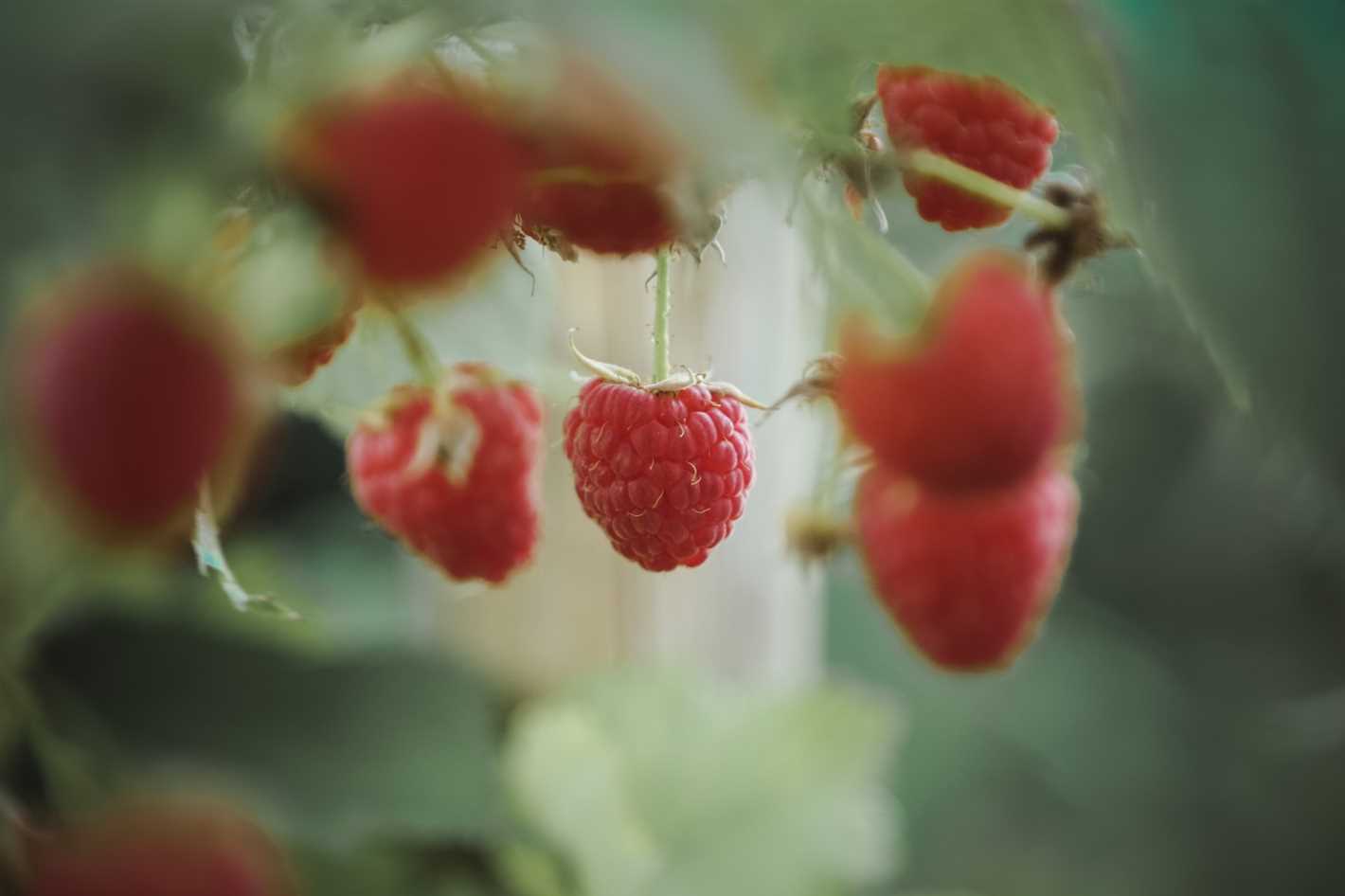

Prune newly propagated raspberry and blackberry plants to encourage branching and increase fruit production. Remove any dead or damaged canes, as well as any weak or crowded growth. Pruning should be done in late winter or early spring before new growth begins.
4. Fertilizing
Feed your newly propagated raspberry and blackberry plants with a balanced fertilizer to provide necessary nutrients for their growth. Follow the package instructions for application rates and timing. Avoid excessive fertilization, as it can lead to imbalanced growth or burn the plants.
5. Support
Install a support system, such as trellises or stakes, to help your raspberry and blackberry plants grow upright and prevent them from sprawling on the ground. This will make it easier to manage the plants, harvest the fruit, and improve air circulation, reducing the risk of disease.
6. Pest and Disease Control
Monitor your newly propagated raspberry and blackberry plants for pest and disease issues. Common pests that can affect these plants include aphids, spider mites, and raspberry cane borers. Implement appropriate control methods, such as natural insecticides or handpicking, if necessary. Also, keep an eye out for signs of disease, such as powdery mildew or raspberry root rot, and take appropriate action to prevent their spread.
7. Harvesting
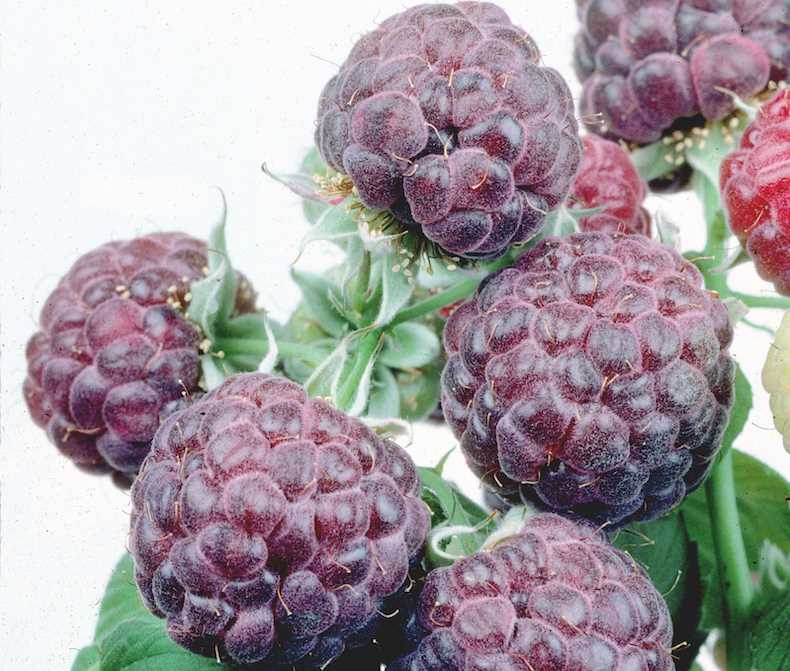

Depending on the variety, raspberry and blackberry plants typically start producing fruit in their second or third year. Monitor the fruit closely and harvest it when it is fully ripe. Gently twist or cut the fruit from the plant to avoid damaging the plant or the fruit.
8. Winter Protection
In colder climates, provide winter protection to your newly propagated raspberry and blackberry plants. Apply a layer of straw or leaves around the base of the plants to insulate the roots and protect them from freezing temperatures. Remove the mulch in the spring once the danger of frost has passed.
By following these care guidelines, you can ensure the healthy growth and productivity of your newly propagated raspberry and blackberry plants. Enjoy the fruits of your labor!
Successful Techniques for Propagating Raspberries and Blackberries
1. Propagating Raspberries
Raspberries can be propagated through various methods, including division, tip layering, and stem cuttings. Here are the steps for each method:
1.1 Division
– Dig up an established raspberry plant during its dormant period (late winter to early spring).
– Carefully separate the root ball into sections, ensuring that each section has at least one healthy shoot and a good amount of roots.
– Replant the divided sections in prepared soil, making sure the roots are covered but the shoot is above the ground.
– Water the newly transplanted divisions and keep the soil moist until they establish.
1.2 Tip Layering
– Identify a low-growing, flexible cane that can easily touch the ground.
– Gently bend the tip of the cane to the ground and bury it about an inch deep in the soil.
– Secure the buried portion of the cane with a U-shaped wire or a rock.
– Water the buried section regularly to keep the soil moist.
– After a few months, new roots will develop from the buried section. At this point, the new plant can be separated from the parent plant and transplanted to a new location.
1.3 Stem Cuttings
– Select a healthy raspberry cane and cut a 6-8 inch section just above a bud.
– Remove the bottom leaves and any flowers or fruit from the cutting.
– Dip the cut end of the stem in rooting hormone to encourage root development.
– Plant the cutting in a well-draining potting mix and keep it in a warm, brightly lit area.
– Water the cutting regularly and mist the leaves to increase humidity.
– After a few weeks, the cutting should develop roots. At this point, it can be transplanted to a larger container or directly into the ground.
2. Propagating Blackberries
Blackberries can also be propagated through division, tip layering, and stem cuttings. Here are the steps for each method:
2.1 Division
– Dig up an established blackberry plant during its dormant period (late winter to early spring).
– Carefully separate the root ball into smaller sections, ensuring that each section has at least one healthy shoot and a good amount of roots.
– Replant the divided sections in prepared soil, making sure the roots are covered but the shoot is above the ground.
– Water the newly transplanted divisions and keep the soil moist until they establish.
2.2 Tip Layering
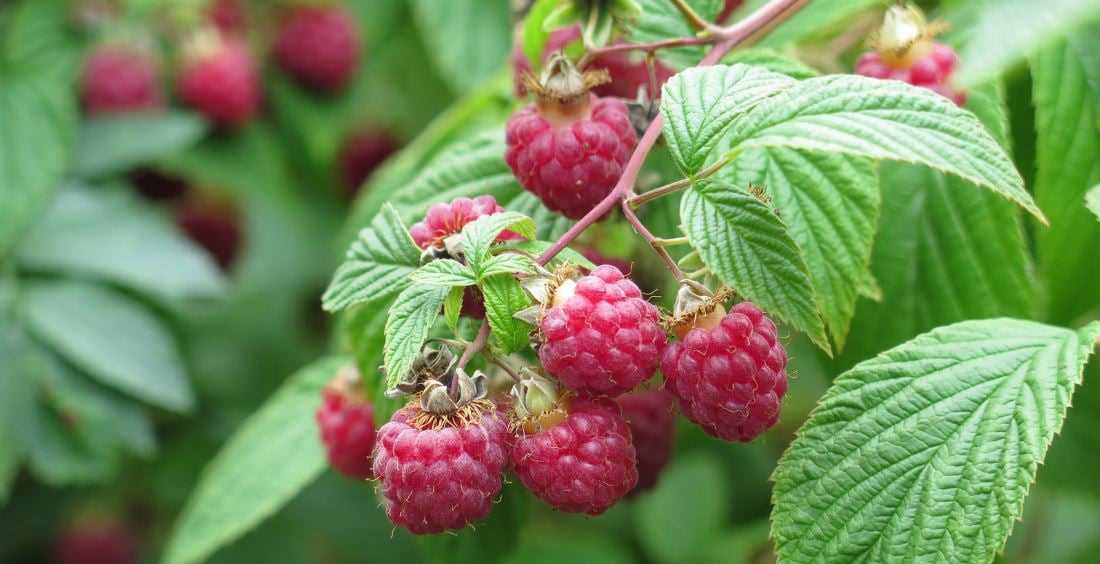

– Identify a low-growing, flexible cane that can easily touch the ground.
– Gently bend the tip of the cane to the ground and bury it about an inch deep in the soil.
– Secure the buried portion of the cane with a U-shaped wire or a rock.
– Water the buried section regularly to keep the soil moist.
– After a few months, new roots will develop from the buried section. At this point, the new plant can be separated from the parent plant and transplanted to a new location.
2.3 Stem Cuttings
– Select a healthy blackberry cane and cut a 6-8 inch section just above a bud.
– Remove the bottom leaves and any flowers or fruit from the cutting.
– Dip the cut end of the stem in rooting hormone to encourage root development.
– Plant the cutting in a well-draining potting mix and keep it in a warm, brightly lit area.
– Water the cutting regularly and mist the leaves to increase humidity.
– After a few weeks, the cutting should develop roots. At this point, it can be transplanted to a larger container or directly into the ground.
By using these successful propagation techniques, you can easily increase your raspberry and blackberry plant inventory without having to rely solely on purchasing new plants. Remember to provide the necessary care and maintenance to ensure the growth and productivity of your newly propagated plants.
Question-answer:
What is the best time to propagate raspberries or blackberries?
The best time to propagate raspberries or blackberries is in early fall, after the fruiting season is over.
How do you propagate raspberries or blackberries?
You can propagate raspberries or blackberries by taking stem cuttings in early fall, removing any flowers or fruits, and planting them in well-draining soil.
What type of soil is best for propagating raspberries or blackberries?
The best soil for propagating raspberries or blackberries is well-draining soil that is rich in organic matter.
Can I propagate raspberries or blackberries from seeds?
While it is technically possible to propagate raspberries or blackberries from seeds, it is not the most reliable method. It is better to propagate them from stem cuttings.
How long does it take for propagated raspberries or blackberries to bear fruit?
It typically takes about two years for propagated raspberries or blackberries to bear fruit.
Can I propagate raspberries or blackberries in containers?
Yes, you can propagate raspberries or blackberries in containers as long as the containers are large enough to accommodate the plants and have good drainage.
What are some common problems when propagating raspberries or blackberries?
Some common problems when propagating raspberries or blackberries include root rot, lack of water, and damage from pests or diseases. It is important to properly care for the plants to avoid these issues.







